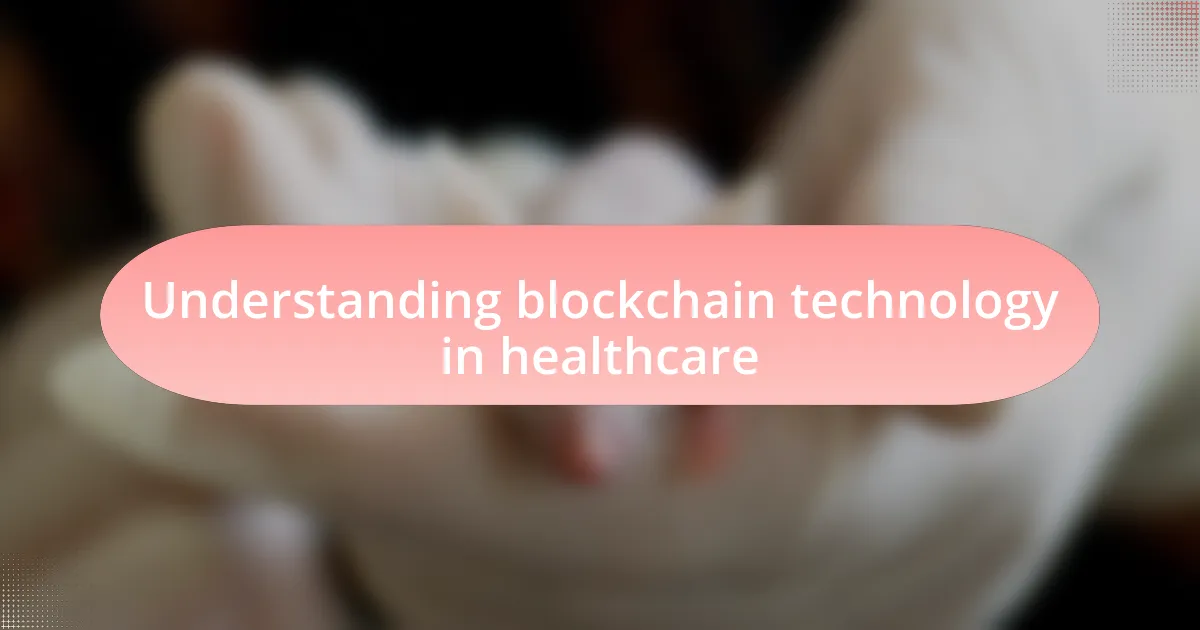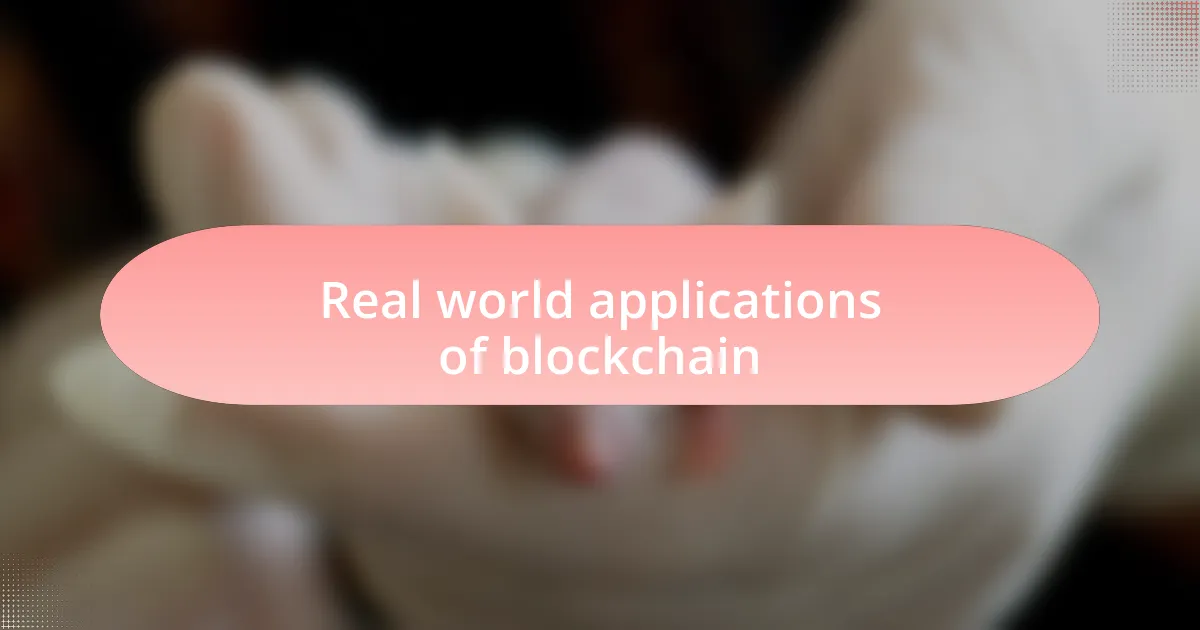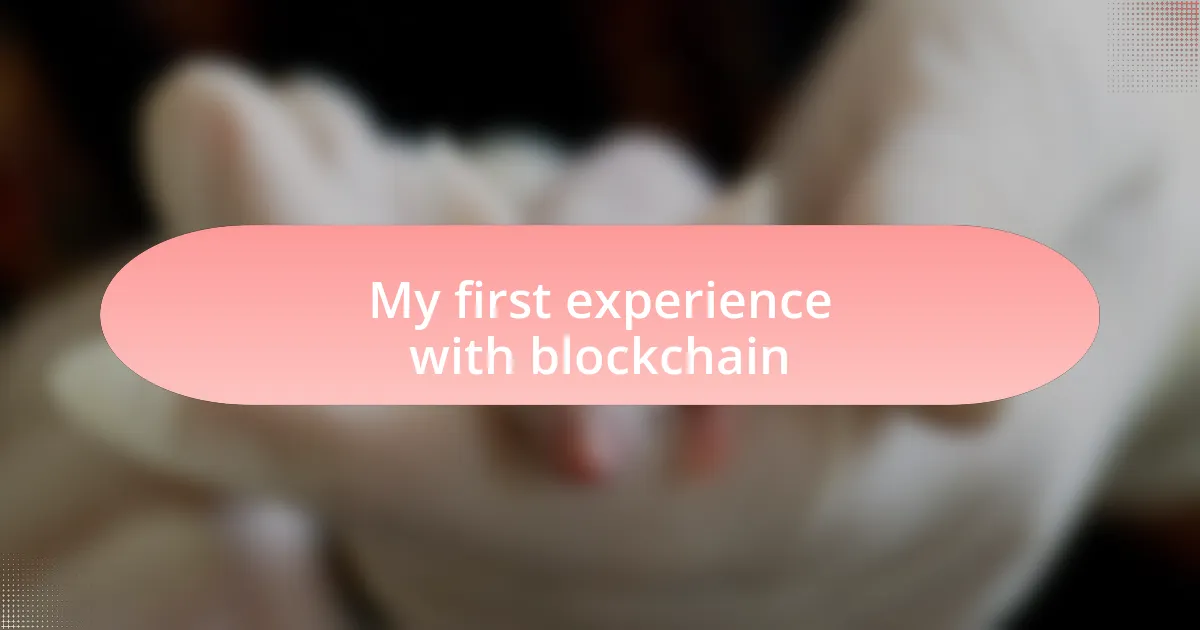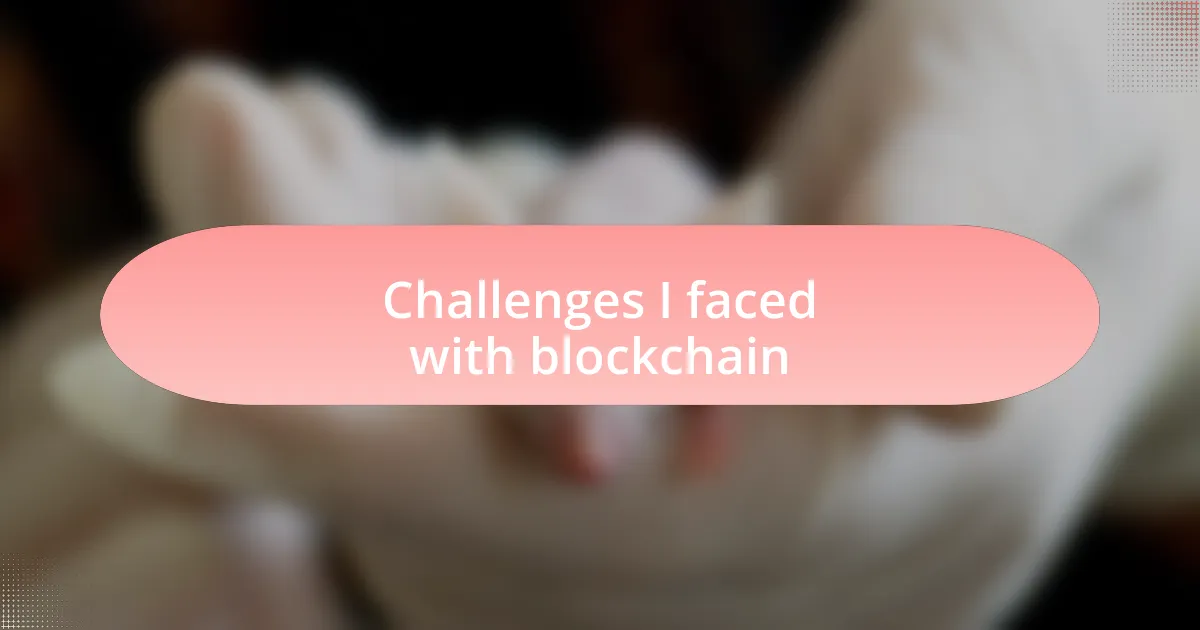Key takeaways:
- Blockchain can enhance data integrity and patient empowerment by allowing secure, decentralized access to medical records across multiple providers.
- Real-world applications include drug traceability, secure telemedicine communications, and instant access to health records in emergencies, improving patient safety and treatment outcomes.
- Challenges include lack of standardization, skepticism among healthcare professionals, and high implementation costs that hinder widespread adoption.

Understanding blockchain technology in healthcare
Blockchain technology in healthcare offers a new way of managing data. Imagine a secure, decentralized database where patient information is stored and verified without the risk of tampering or unauthorized access. I once saw a demonstration where patients could access their records seamlessly across different providers. It made me realize how transformative this can be for patient empowerment.
The potential for improving data integrity is huge. One time, I worked with a hospital that struggled with inconsistent patient records due to multiple systems. If blockchain had been in play then, it could have created a single source of truth, eliminating discrepancies and fostering trust among healthcare providers. How comforting would it be for patients to know that their sensitive information is always accurate and secure?
Furthermore, consider the impact on clinical trials. With blockchain, researchers can ensure data transparency and traceability, addressing concerns about data manipulation. From my experience, participants are more willing to engage when they trust that their data is handled responsibly. Isn’t it reassuring to think about the future of research supported by technology that prioritizes integrity and patient safety?

Real world applications of blockchain
One of the most exciting real-world applications of blockchain can be found in drug traceability. I recall sitting in on a discussion at a pharmaceutical company about the challenges of counterfeit medications. When they mentioned using blockchain to track drugs from manufacture to consumer, I felt a wave of optimism. It was clear that such a system could ensure that every pill delivered to patients is authentic and safe. Can you imagine the peace of mind for patients knowing their medications come from verified sources?
In my experience with telemedicine, blockchain’s role in verifying identities and securing communications has been a game-changer. I remember working with a startup that utilized smart contracts to streamline payment processes between providers and patients. This innovation not only sped up transactions but also ensured that sensitive healthcare information remained secure. Isn’t it fascinating how blockchain can enhance both trust and efficiency in remote healthcare delivery?
Another impactful use case is the management of health records, particularly in emergency situations. I once witnessed a simulation involving first responders, where secure and instant access to a patient’s history could make all the difference. When emergency personnel can rapidly retrieve accurate medical records, it improves treatment outcomes significantly. How critical would it be for healthcare teams to have access to complete patient information, especially in life-or-death scenarios? This is where blockchain truly shines, bridging the gap in urgent care.

My first experience with blockchain
Reflecting on my first experience with blockchain, I vividly recall attending a workshop that focused on its potential in healthcare. There was a palpable excitement in the air as we delved into how blockchain could revolutionize patient data security. I couldn’t help but wonder how transformative it would be to decentralize patient records, ensuring that individuals have control over their own health information. What if we could empower patients like never before?
During a coffee break, I struck up a conversation with a blockchain developer who shared fascinating insights. He explained how immutable records could prevent fraudulent claims, painting a picture of a system where dishonesty was nearly impossible. I was struck by the passion in his voice; it made me realize that this technology wasn’t just theoretical—it had the potential to reshape how we view trust in healthcare. Could you imagine a world where every interaction feels inherently secure?
My excitement reached new heights when I got to see a prototype during that workshop. It wasn’t just PowerPoint slides; I was looking at a working model that promised to streamline patient consent processes. Witnessing firsthand how patients could grant access to their records with a simple, secure click was eye-opening. It felt like stepping into the future of healthcare, one where patients are more informed and engaged. How empowering would it be for individuals to have direct access to their data and the ability to control who sees it?

Challenges I faced with blockchain
As I embarked on my journey with blockchain in healthcare, I quickly encountered some significant hurdles. One major challenge was the lack of standardization among various blockchain platforms. Each blockchain solution seemed to have its own set of rules and protocols, making it tough to find a cohesive way to integrate with existing healthcare systems. This led me to wonder: how can we build a seamless experience for users when we’re all speaking different languages?
Another challenge I faced was the skepticism surrounding this emerging technology. Many healthcare professionals were hesitant to adopt blockchain due to its complexity and the fear of change. I remember presenting the benefits of blockchain at a hospital meeting, only to be met with puzzled expressions and crossed arms. It made me realize that overcoming ingrained habits and fears is just as crucial as the technology itself. What good is an advanced solution if it is met with resistance?
Cost constraints were also a persistent issue. Implementing blockchain technology often requires substantial investment in infrastructure and training, which many healthcare organizations couldn’t justify amidst tight budgets. I found myself pondering the question: how do we balance the promise of innovation with the realities of fiscal limitations? It was a tough position to navigate, and it underscored the need for strategic planning and clear communication of the long-term benefits to encourage investment.